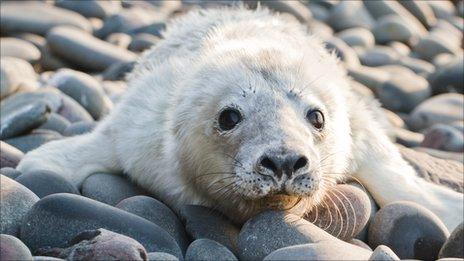Record number of seal pups born at Farne Islands colony
- Published
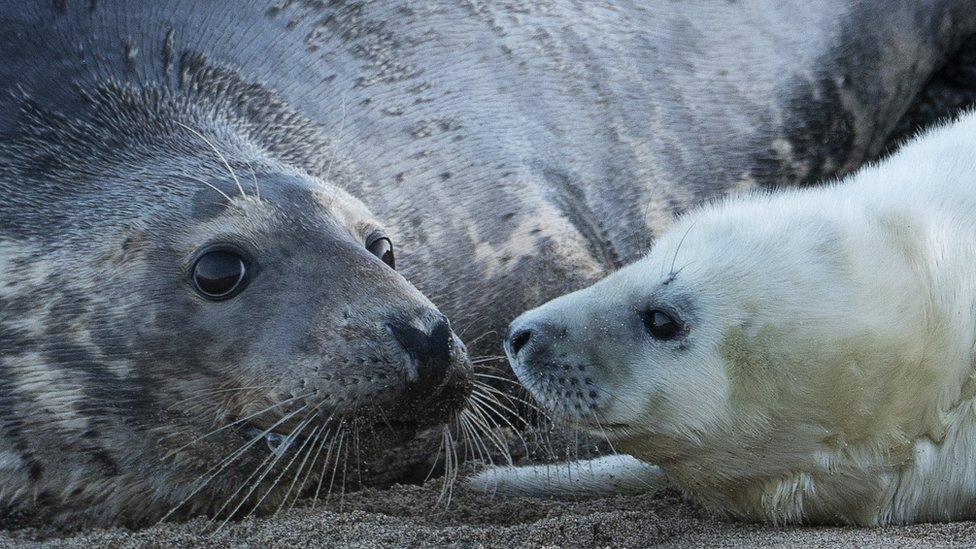
In the past bad weather has hit breeding numbers
The number of grey seal pups born at one of England's largest colonies has hit a record high.
Surveys by rangers have shown the number of youngsters born on the Farne Islands off Northumberland has risen by almost 50% in five years.
Some 2,602 Atlantic grey seal pups were counted in the latest breeding season on the islands, up from 1,740 in 2014.
The National Trust said a good supply of food and fewer predators were behind the rise in numbers.
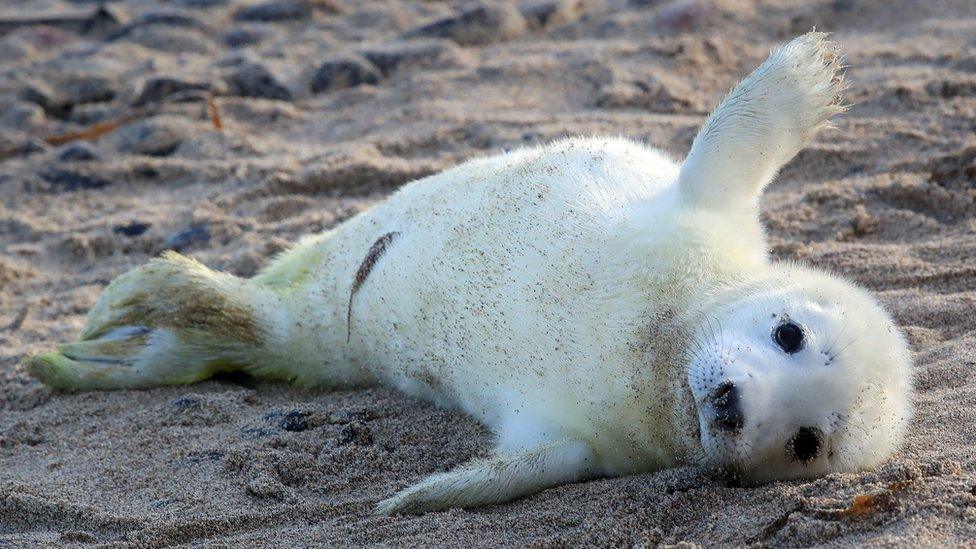
Seal pup numbers have risen by 50% over the past five years
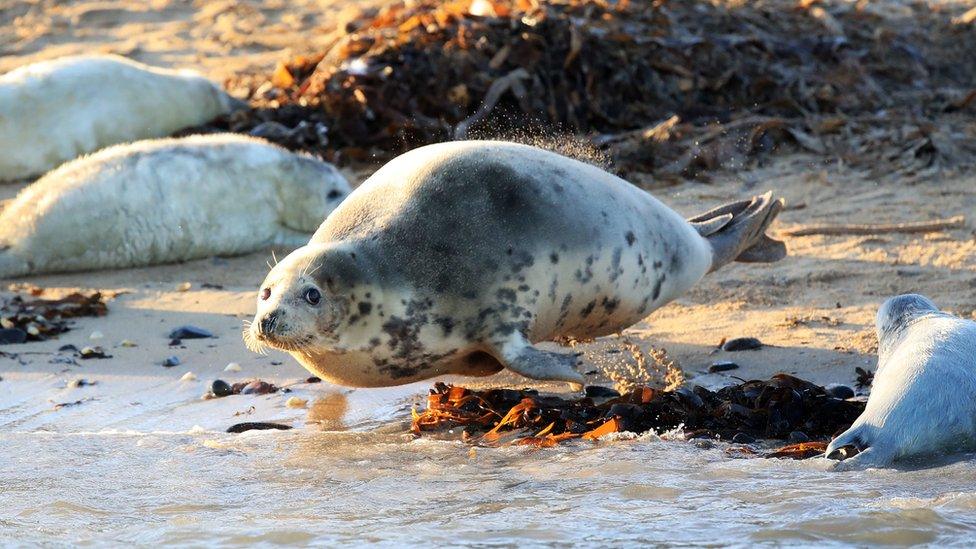
Grey seals are protected by law
Atlantic grey seals are protected mammals, with global numbers thought to be around 300,000 - half of which live in British and Irish waters.
Rangers who live on the Farne Islands for nine months a year survey the seals during the breeding season, which runs from late September to December, with the majority of pups born in October and November.
You may also like:
Once the breeding season starts, pups are sprayed with a harmless vegetable dye to indicate the week they were born, with a rotation of three or four colours helping rangers keep track of numbers.
Drones have also been used to help monitor pups for the first time.
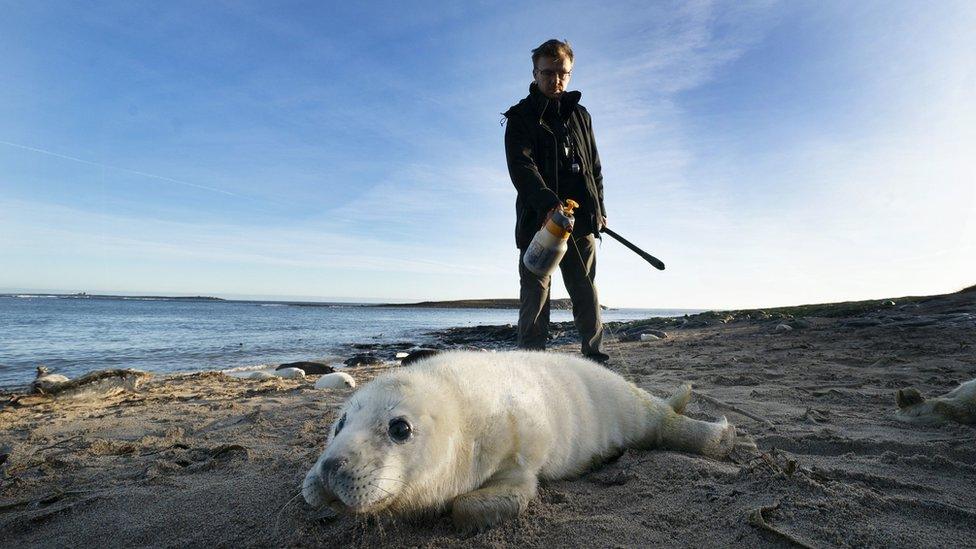
Rangers use special dye to mark newly-born pups

Grey seal facts:
Grey seals are Britain's largest living carnivores
Britain has 36% of the world population of grey seals around its shores
Pups weigh 14kg (30.8lb) at birth but quickly gain the blubber they need because their mother's milk contains 60% fat
Source: BBC Nature

Ranger Thomas Hendry said: "A lack of predators and a plentiful supply of sand eels, which make up about 70% of the seals' diet, has helped bolster our seal pup numbers.
"This new record for the grey seal colony is certainly a milestone and could be good news for the health of our seas around the islands."
"Over the next few years we will monitor the effect of a growing seal population and to manage the island habitats accordingly," he added.
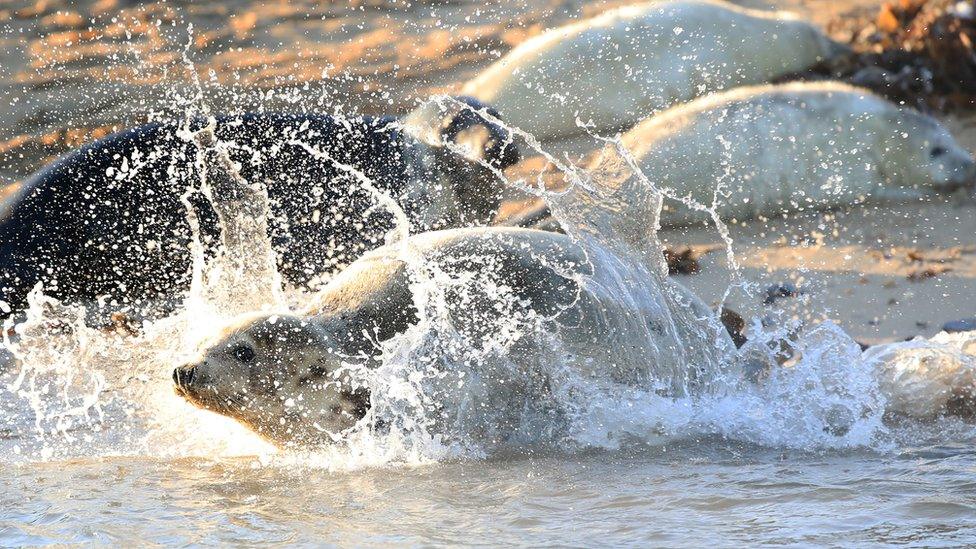
Some seals are moving to islands with higher ground to protect themselves from storms, rangers say
- Published21 October 2016
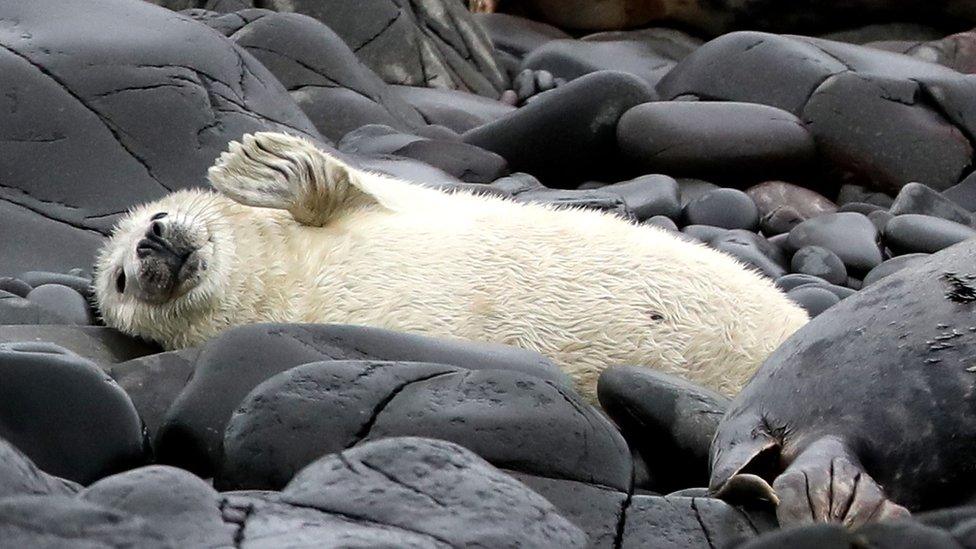
- Published25 October 2012
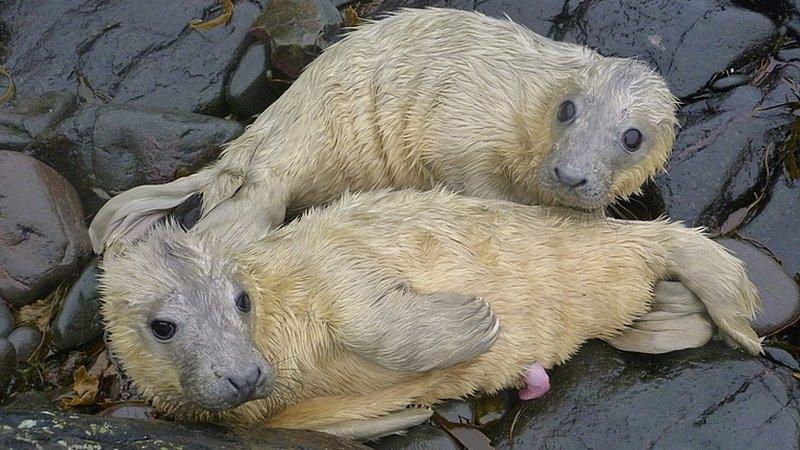
- Published21 June 2012
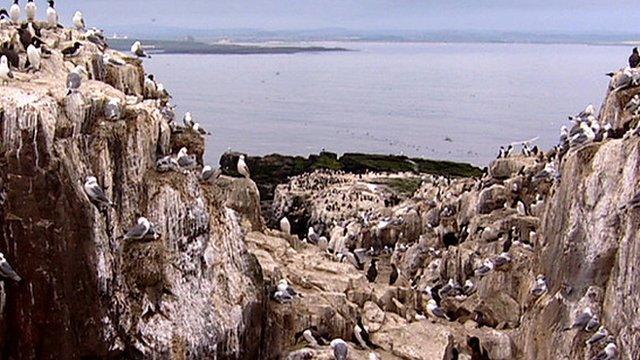
- Published30 September 2011
